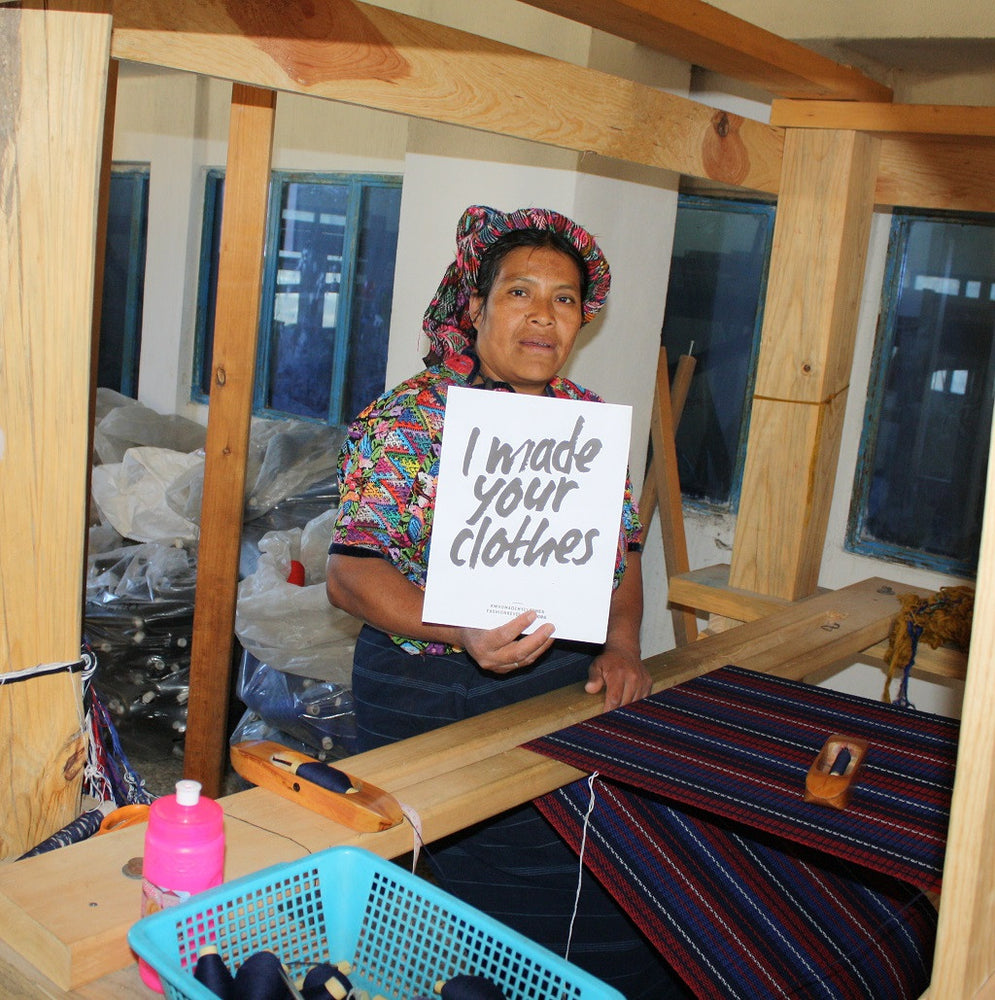It's Time for a Fashion Revolution

What's in your closet? Are you someone who keeps your clothing organized and purges your closet regularly, disposing of any garments that don’t fit your current size or taste, perhaps they have a small hole? Or are you an “accumulator” and prefer to add to your closet regularly without subtracting? Whichever category you place yourself, have you ever asked who made your clothes?? Who is the person that dyed the threads, made the zipper, cut out the fabric, and who sewed the seams? Where do they live? What does their workplace (er, factory) look like? What are their wages? What is their lifestyle? When faced with a shirt that is $9.99 in the store – do you find yourself saying “why not buy it”? You don’t have to love it at that price, do you? It’s not a big expense! But wait….someone is paying for that somewhere. If you only spend $10 on the end product and the cost had to cover the materials, the shipping, the labor, etc. How much do you think that person who made the shirt was paid? Furthermore, how old is that person? Chances are, if you find yourself picking up bargains normally found in large chain stores, the person on the other end may just be a child and chances are even greater that the minimum wage they are being paid is not even close to supporting someone living in poverty conditions. It is a tough thought to swallow but the exciting news is that people are starting to be more conscious of their purchases – think Fair Trade as an example. Shoppers are starting to value the work that goes into the garments they buy – and looking for well-made products that will last – avoiding the cheap options that will survive one washing and drying cycle.
On April 24, 2013, the Rana Plaza Garment Factory in Bangladesh collapsed and shed light on an industry full of exploitation. Over eleven hundred people were killed and 2500 people were injured because of negligence and unsafe working conditions. In addition, the fashion industry is either the 2nd or 3rd largest polluter in the world depending on who you quote. Aside from toxic dyes impacting the environment, it takes 1800 gallons of water to grow the cotton for one pair of blue jeans. Tons and tons of fabric and clothing is disposed of as waste before anyone ever wears them. And, clothing that is donated after its life in your closet is often times shipped to poor countries and sold for low prices, wiping out the competition of local garment makers. Thirty-six million people are working as slaves primarily making clothes for the western world. It’s time to make a change! A nonprofit company called Fashion Revolution based in the UK has designated the anniversary of this tragedy (April 24th) as Fashion Revolution Day. In addition, they have created a social media campaign called #whomadeyourclothes that is gaining momentum. Their goal is to see a fashion industry that values the people, the environment and the creativity. Mayamam Weavers is joining the campaign – keep your eye on us on Instagram or facebook to see our photos.
“Fast fashion isn’t free. Someone somewhere is paying.” Lucy Siegle
The issues are sad, and often overwhelming. The cost of fashion is rising and yet the cost of clothes continues to drop and spending continues to rise. We can make a difference with our purchases. Be conscious of what you are buying; value the work that goes into the garments you choose to buy. Together we will stop filling the landfills with cheap clothing. For more information as well as a list of resources, check outfashionrevolution.org. “The True Cost,” is a documentary that focuses on these issues and was released last year. You can rent the movie at http://truecostmovie.com or find it on itunes or netflix. Although there is not a straight and easy answer to the current problem you can make a difference by knowing #whomadeyourclothes.


Leave a comment